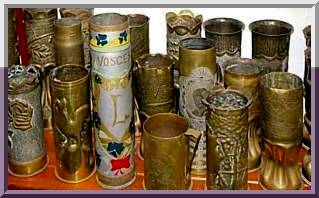 |
"THE UNKNOWN WARRIOR"
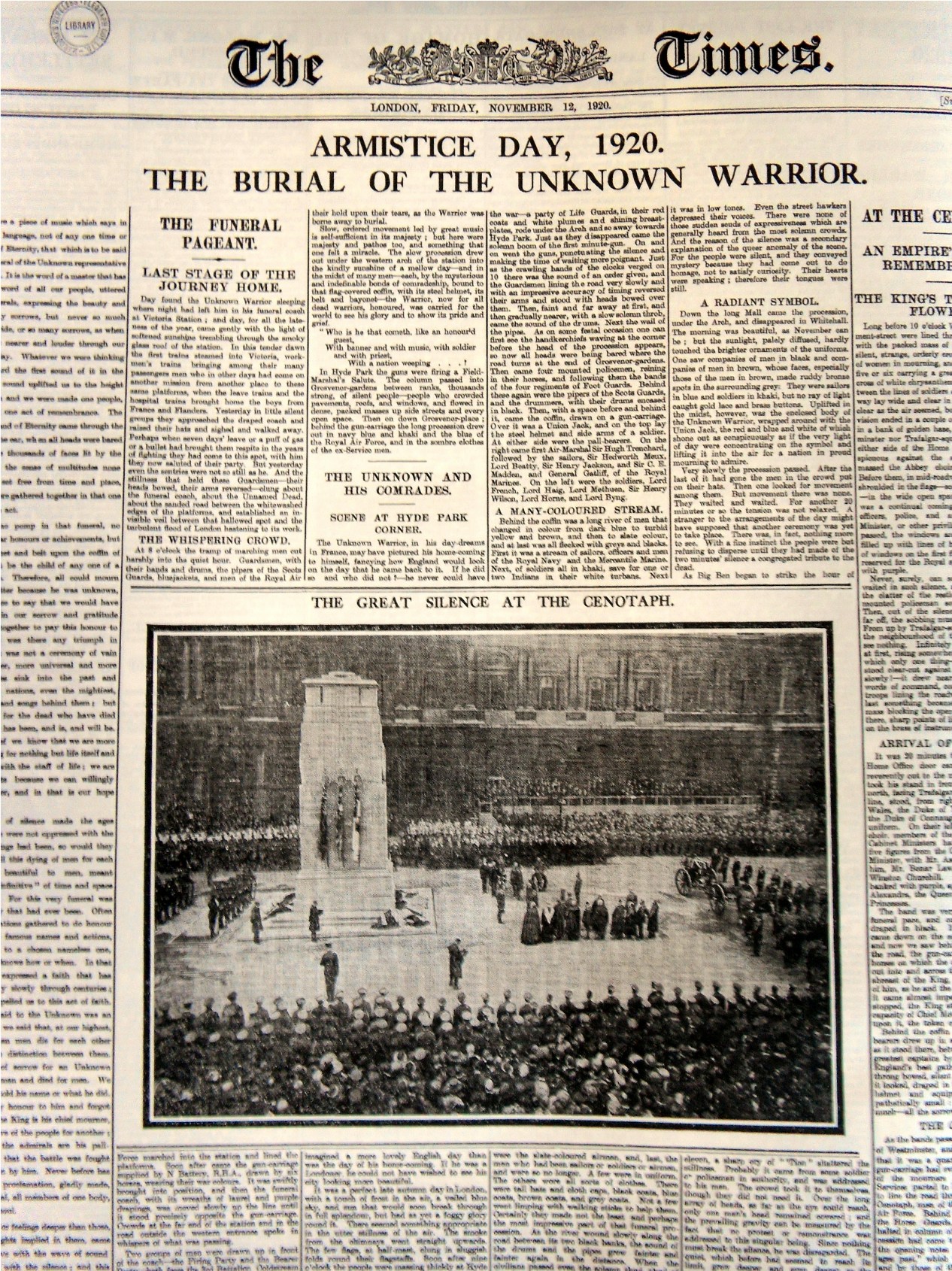
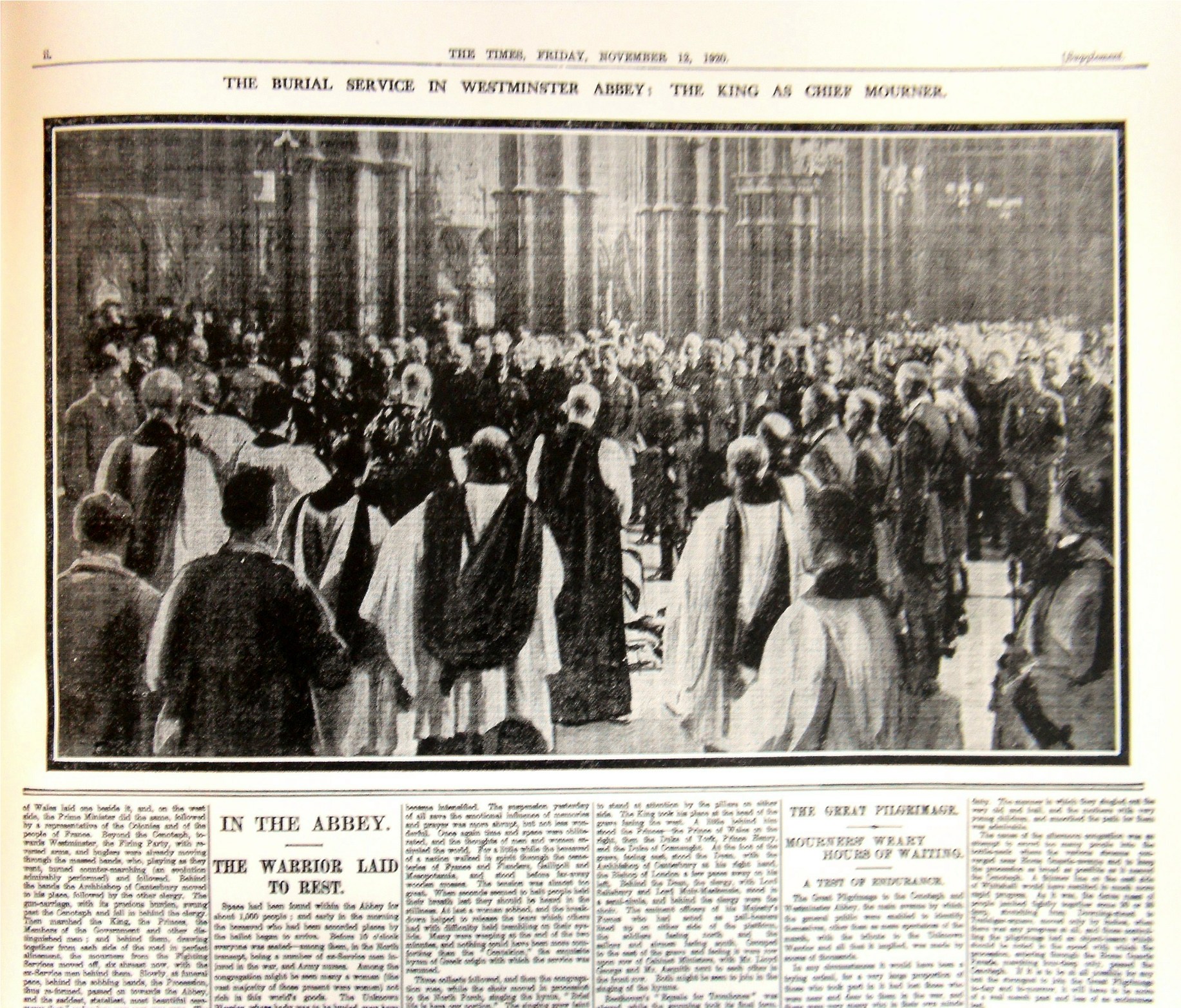
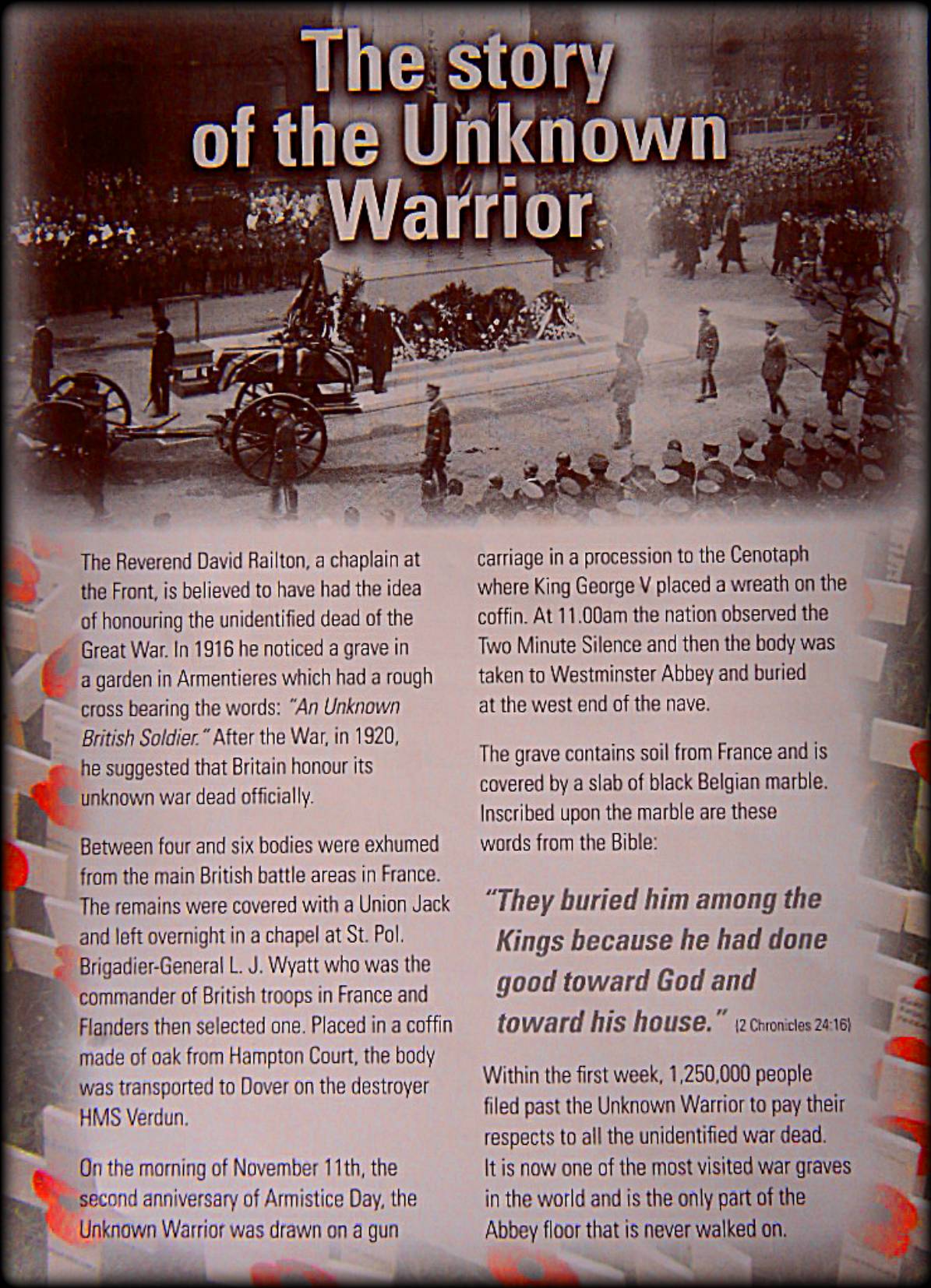
The Unknown Warrior being transported back to Britain from France, 1920. After leaving Boulogne-sur-Mer on HMS Verdun,
his casket received a 19-gun salute when it reached Dover, where thousands of bereaved families greeted him. Wreaths and casket unloaded, the procession headed along the quayside to the awaiting luggage carriage - painted white for ease of recognition and hooked on to the 5.50 p.m. Dover to Victoria boat train.
As the train pulled away, with an officer and 15 other ranks from the 2nd Battalion Connaught Rangers on board to escort the body to London - a Guard of Honour from the Connaught Rangers presented arms, with the Royal Irish Fusiliers following suit at Dover's harbour station moments later.
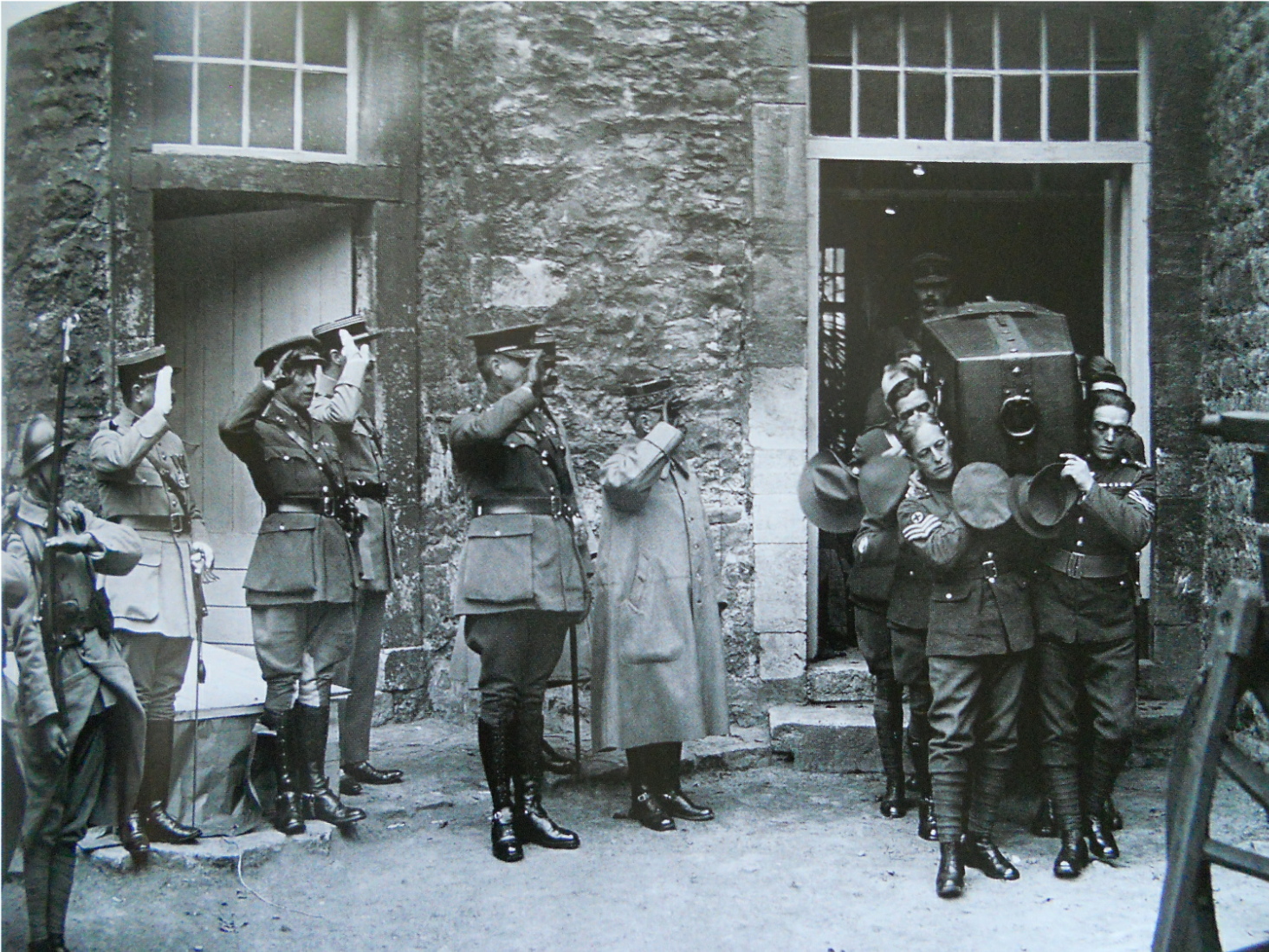
Below - the arrival of the gun carriage bearing the Unknown Warrior at the Cenotaph, Whitehall, London for the unveiling ceremony by King George V, 11 November 1920.
On the morning of 11 November 1920 - the second anniversary of the armistice that ended World War One - the body of the Unknown Warrior was drawn in a procession to the Cenotaph. This new war memorial on Whitehall, designed by Edwin Lutyens, was then unveiled by George V. At 11 o'clock there was a two-minute silence, and the body was then taken to Westminster Abbey where it was buried at the west end of the nave. To the surprise of the organisers, in the week after the burial an estimated 1,250,000 people visited the abbey, and the site is now one of the most visited war graves in the world. The text inscribed on the tomb is taken from the bible (2 Chronicles 24:16): 'They buried him among the kings, because he had done good toward God and toward his house'.
The Unknown Warrior en route to the Cenotaph Service, Whitehall, London
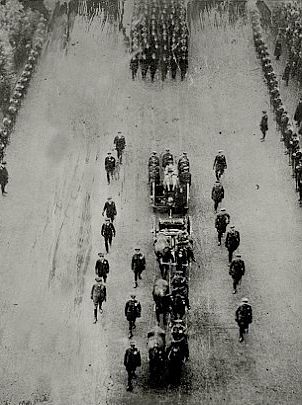
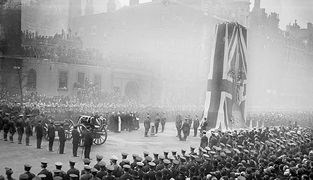
Service at the Cenotaph, Whitehall, London
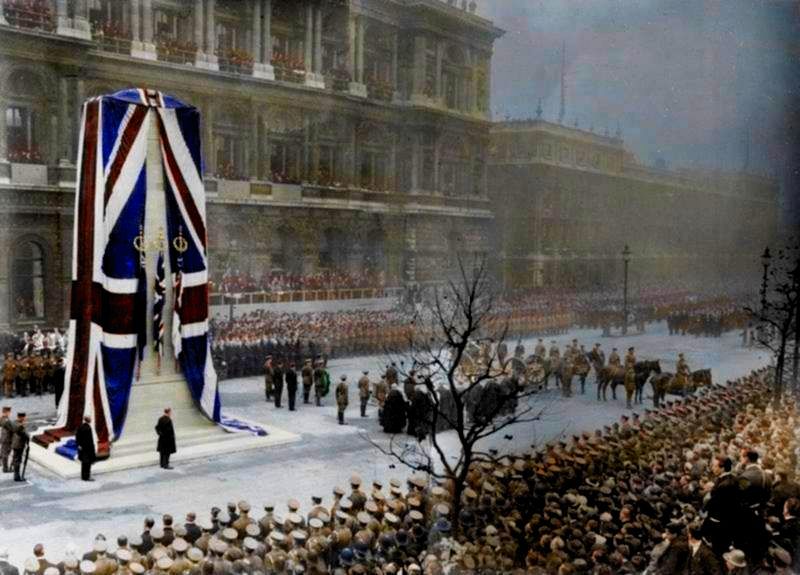
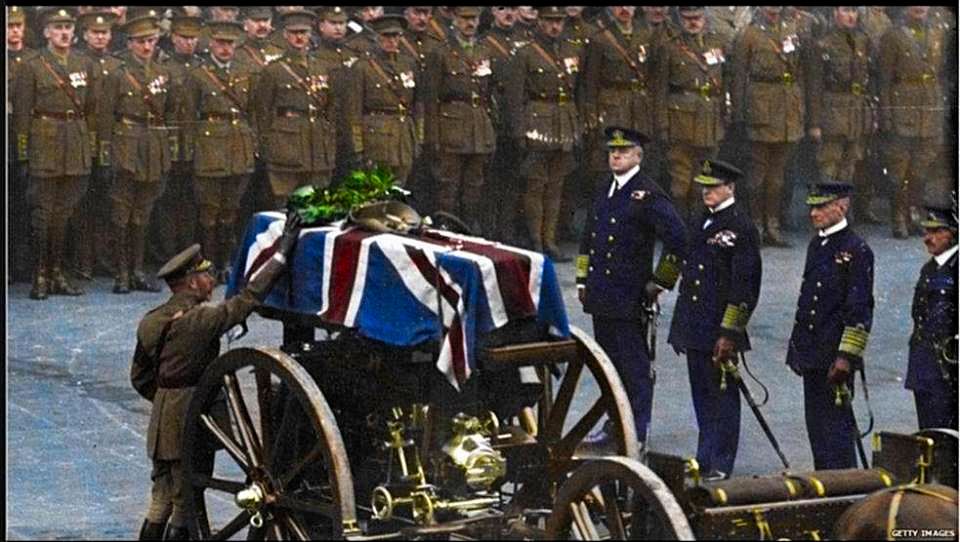
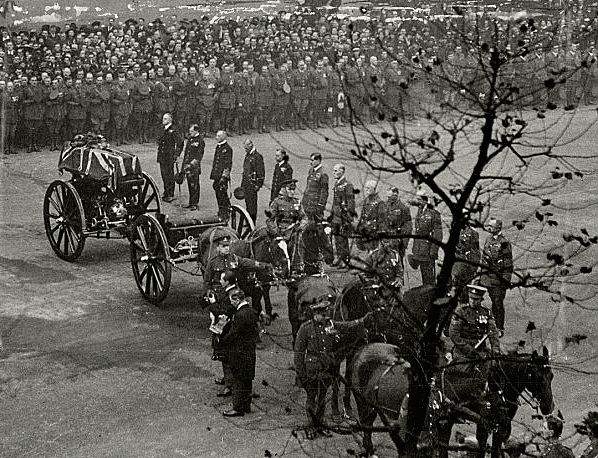
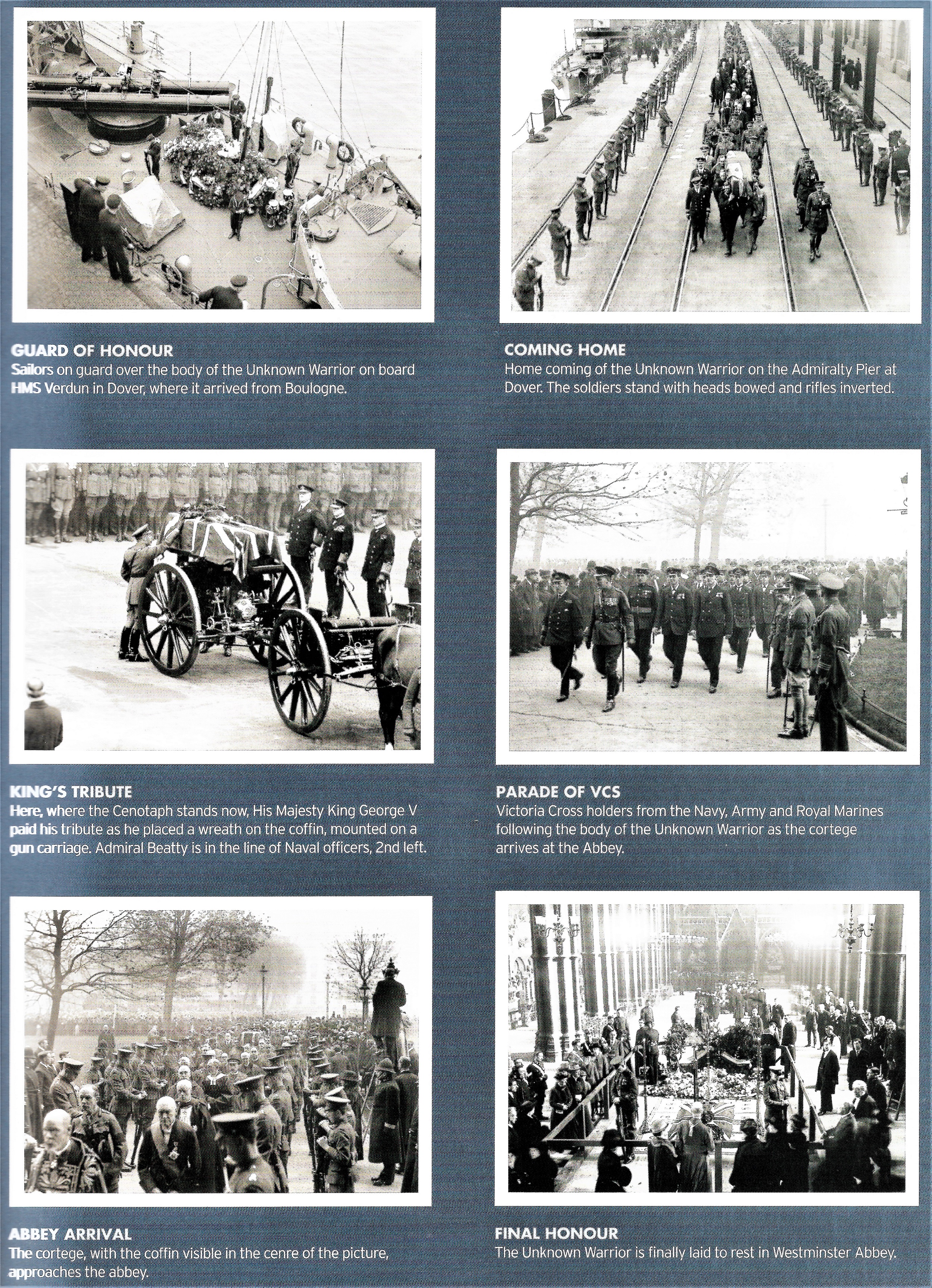
The casket, crafted in English oak from Hampton Court Palace,at rest, in Westminster Abbey, London. It had been borne into the West Nave flanked by a guard of honour of 100 recipients of the Victoria Cross. Guests of Honour at the Service included 1,000 widows and mothers, 100 women who had each lost their husband AND all of their sons, and 100 nurses who had been wounded or blinded at the Front.
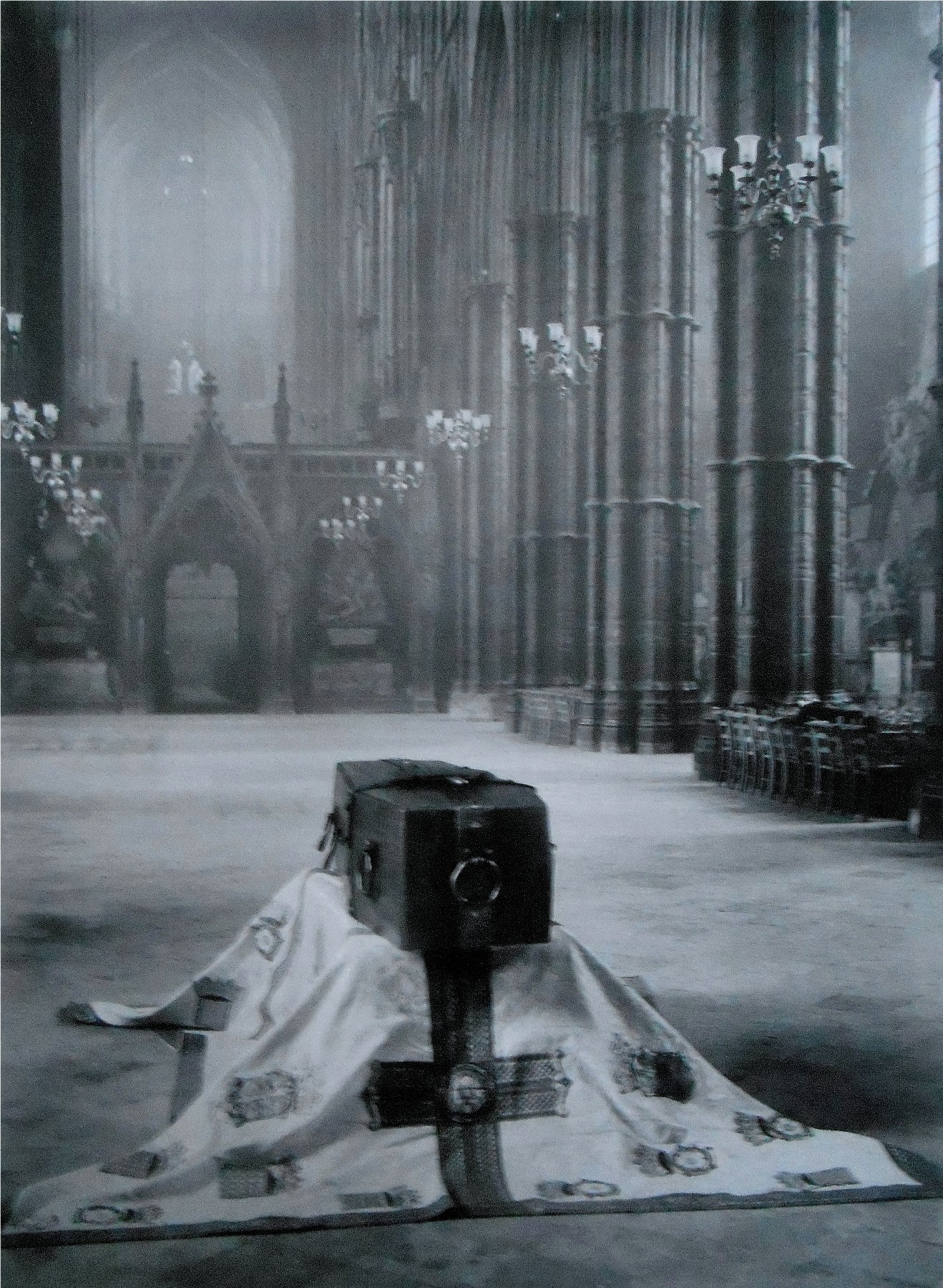
.jpg?443)
The memorial is simple; a black marble slab, from Namur, Belgium, is engraved in gold and edged with hundreds of poppies. The origin of the memorial can be traced back to a fleeting moment in early 1916 in the French village of Erquinghem-Lys, when the Rev David Railton , serving as an army chaplain on the Western Front, came across a grave marked by a rough cross. Its inscription read: "An Unknown British Soldier". Four years later, Railton wrote to the Dean of Westminster proposing that an unidentified British soldier from the battlefields in France be buried with due ceremony in Westminster Abbey "amongst the kings".
The proposal was, in turn, fullheartedly welcomed by the Dean and the Prime Minister, David Lloyd George.
For decades, many families will have speculated that the remains beneath the marble slab might have belonged to their husband, son or relative killed in France or Flanders.....More than a Century ago the Rev George Kendall, an army chaplain, was tasked with finding the body in France or Flanders, and exhuming it along with the remains of five other soldiers. According to his two sons, David and Tim Kendall, he had come under pressure to reveal the true identity of the Unknown Warrior. But they insisted that when their Father died in 1964, he took his secret to his grave.
Indeed, the chaplain wrote in his unpublished autobiography: "All I can say that he was chosen from the countless unnamed dead in France and Flanders, that the Nation might honour him, and this without distinction of rank, birth or service. Of course, one might ask from what cemetary the bodies were selected. The location can never be revealed, but again I stress this great fact - the soldier lying in Westminster Abbey is British and unknown...he may have come from some little village or some city in this land, and he may be the son of a working man or of a rich man, "Unknown to man, but known to God" "
Brigadier General L. J. Wyatt, Director General of the Department of Graves Registration and Enquiry, was tasked with the selection of the soldier, whose corpse was so decomposed there was no possibility he could ever be identified. Just before Armistice Day 1920, a selection of unidentifiable corpses was brought to Wyatt at St-Pol-sur-Ternoise Chapel in Northern France, where at the stroke of midnight, he placed his hand on one of them and had him transported to Boulogne-sur-Mer and the awaiting destroyer HMS Verdun.
.jpg?49)
.jpg?49)
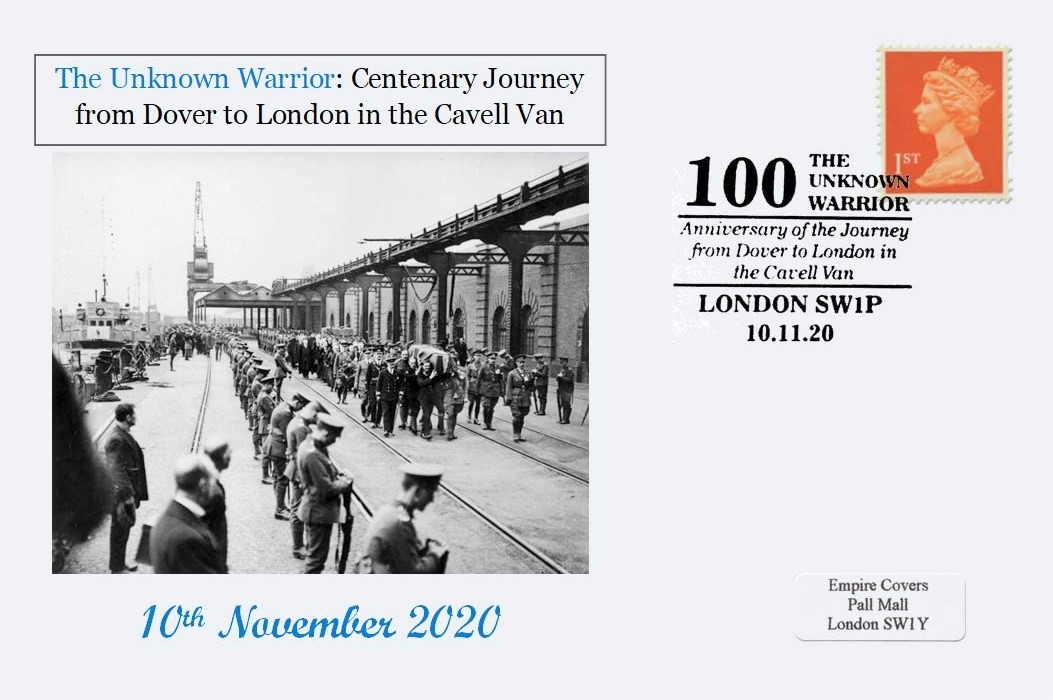
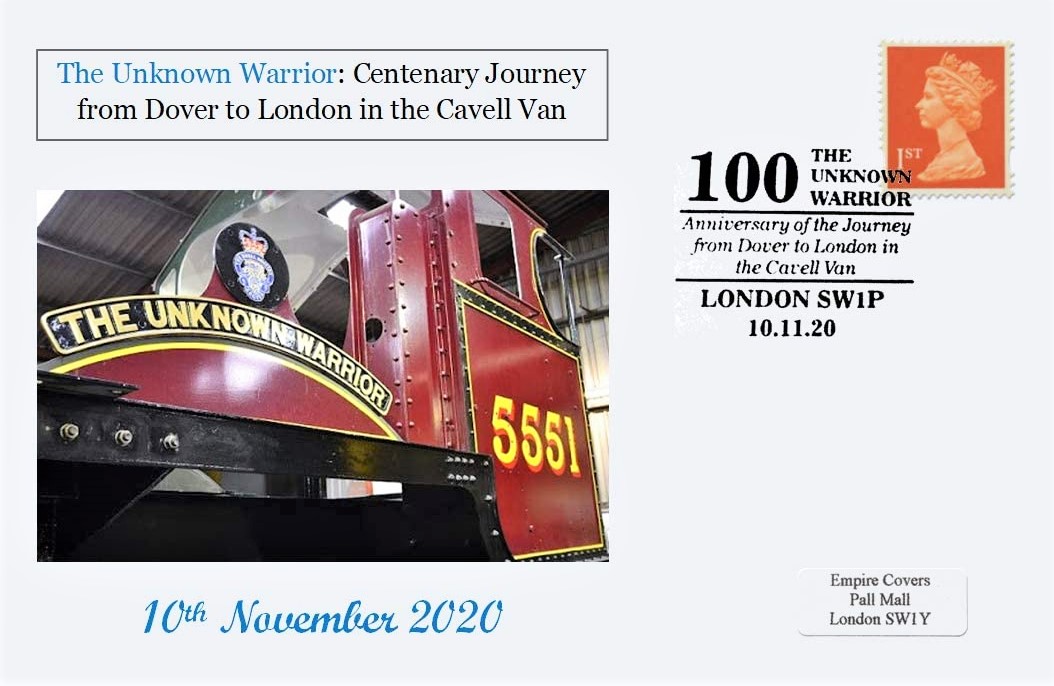
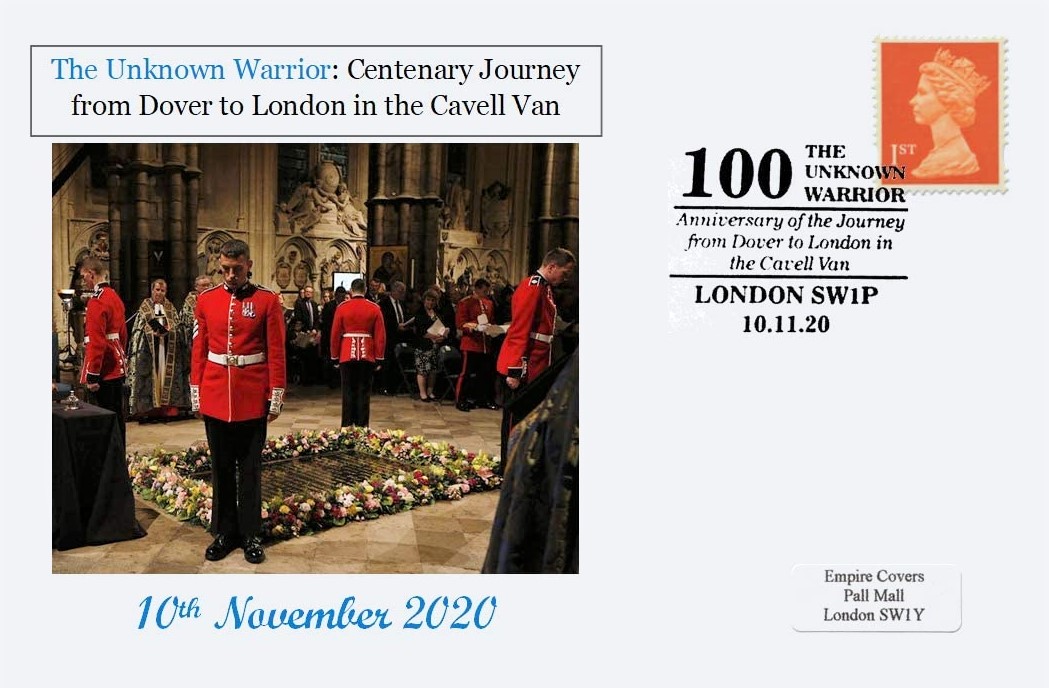
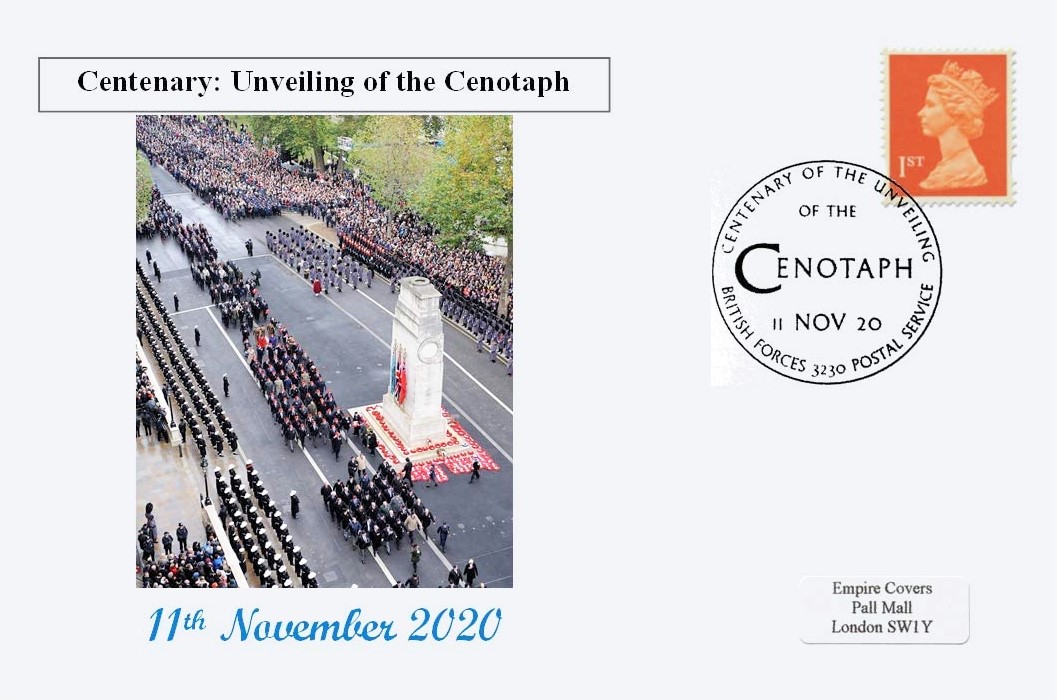
|
 |
